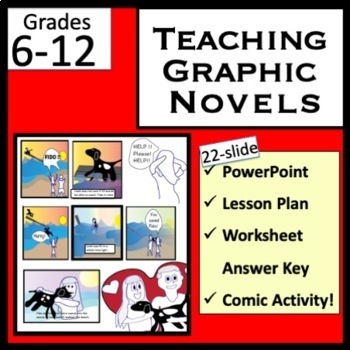Teaching Graphic Novels
- Google Drive™ folder

Description
This lesson gives an overview of graphic novels, including vocabulary, reading order, and much more. The student worksheet allows students to easily follow the lesson on the 22-slide PowerPoint (lesson plan included).
This is a great one- day overview lesson when teaching any graphic novel, such as Maus by Art Spiegelman or March by John Lewis. Extend to 2 days with the extra activity of creating your own graphic novel page / comic page! (A graphic novel page template is included.)
The lesson begins with explaining the difference between graphic novels and other literary formats. Students are given the opportunity to discuss “Should graphic novels be included in school curricula?” Teachers can use the graphics on the PowerPoint to show students the elements (panels, captions, etc) as well as the correct order to read panels.
This activity will allow students to use critical thinking skills to determine the number of panels on the page, the important story parts to highlight, and which images and speech bubbles to use.
A Review and an Answer Key are included.





